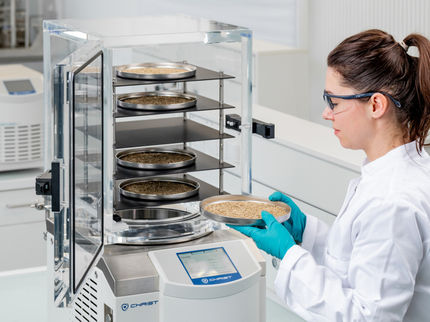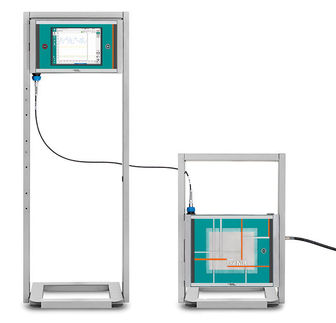Stevens-Johnson syndrome
Classification & external resources
| ICD-10
| L51.1
|
| ICD-9
| 695.1
|
| DiseasesDB
| 4450
|
| MedlinePlus
| 000851
|
| eMedicine
| emerg/555 derm/405
|
| MeSH
| D013262
|
Stevens-Johnson syndrome (SJS) is a severe and life-threatening condition. It is thought to be a hypersensitivity complex affecting the skin and the mucous membranes.
There is agreement in the medical literature that Stevens-Johnson syndrome can be considered a milder form of toxic epidermal necrolysis (TEN). However, there is debate whether it falls on a spectrum of disease that includes erythema multiforme;[1][2] many consider erythema multiforme (EM) to be unrelated to SJS and TEN.[3][4]
Some classify SJS as a severe expression of erythema multiforme, and it occasionally referred to as erythema multiforme major.[citation needed]
Epidemiology
SJS is a rare condition, with a reported incidence of around one case per million people per year.
Causes
SJS can be caused by infections (usually following viral infections such as herpes simplex virus, influenza, mumps, cat-scratch fever, histoplasmosis, Epstein-Barr virus, or similar), allergic reactions to drugs, (Dicloflex, fluconazole,[5] valdecoxib, penicillins, barbiturates, sulfas, phenytoin, lamotrigine, nevirapine, Ibuprofen, ethosuximide, carbamazepine)[6][7], malignancy (carcinomas and lymphomas), or idiopathic factors (up to 50% of the time). SJS has also been consistently reported as an uncommon side effect of herbal supplements containing ginseng. SJS may also be caused by cocaine usage.[8]
[Images"http://www.inbound.ch/anabel/home.htm"][1]
Treatment
Discontinue all medications, particularly those known to cause SJS reactions. Treatment is initially similar to that of patients with thermal burns, and continued care can only be supportive (e.g. IV fluids) and symptomatic (e.g. analgesic mouth rinse for mouth ulcer); there is no specific drug treatment (2002). Treatment with corticosteroids is controversial since it might aggravate the condition or increase risk of secondary infections. Other agents have been used, including cyclophosphamide and cyclosporine, but none have exhibited much therapeutic success. Intravenous immunoglobulin (IVIG) treatment has shown some promise in reducing the length of the reaction and improving symptoms. Other common supportive measures include the use of topical pain anesthetics and antiseptics, maintaining a warm environment, and intravenous analgesics. An ophthalmologist should be consulted immediately, as SJS frequently causes the formation of scar tissue inside the eyelids leading to corneal vascularization and impaired vision, as well as a host of other ocular problems. Also, an extensive physical therapy program ensues after the patient is discharged from the hospital
Prognosis
SJS proper (with less than 10% of body surface area involved) has the mortality rate of around 5%. The risk for death can be estimated using the SCORTEN scale, which takes a number of prognostic indicators into account.[8]
Other outcomes include organ damage and blindness.
Eponym
It is named for Albert Stevens and Frank Johnson.[9][10]
People with Stevens-Johnson Syndrome
- Padma Lakshmi, actress, model, television personality, and cookbook writer[11]
- Tessa Keller of MTV show Laguna Beach
- Sebastian Tamayo Donald Trumps Assistant
References
- ^ Carrozzo M, Togliatto M, Gandolfo S (1999). "[Erythema multiforme. A heterogeneous pathologic phenotype]". Minerva Stomatol 48 (5): 217-26. PMID 10434539.
- ^ Farthing P, Bagan J, Scully C (2005). "Mucosal disease series. Number IV. Erythema multiforme". Oral Dis 11 (5): 261-7. PMID 16120111.
- ^ Bastuji-Garin S, Rzany B, Stern RS, Shear NH, Naldi L, Roujeau JC (1993). "Clinical classification of cases of toxic epidermal necrolysis, Stevens-Johnson syndrome, and erythema multiforme". Archives of dermatology 129 (1): 92-6. PMID 8420497.
- ^ Ogundele O, Silverberg MA. Erythema Multiforme. eMedicine.com. URL: http://www.emedicine.com/emerg/topic173.htm. Accessed on: May 6, 2007.
- ^ Medsafe Data Sheet March 8, 2005. Accessed April 26, 2007.
- ^ Fagot J, Mockenhaupt M, Bouwes-Bavinck J, Naldi L, Viboud C, Roujeau J (2001). "Nevirapine and the risk of Stevens-Johnson syndrome or toxic epidermal necrolysis". AIDS 15 (14): 1843-8. PMID 11579247.
- ^ Devi K, George S, Criton S, Suja V, Sridevi P (2005). "Carbamazepine--the commonest cause of toxic epidermal necrolysis and Stevens-Johnson syndrome: a study of 7 years". Indian J Dermatol Venereol Leprol 71 (5): 325-8. PMID 16394456.
- ^ a b Stevens-Johnson Syndrome - emerg/555 at eMedicine
- ^ Stevens-Johnson syndrome at Who Named It
- ^ A. M. Stevens, F. C. Johnson. A new eruptive fever associated with stomatitis and ophthalmia; report of two cases in children. American Journal of Diseases of Children, Chicago, 1922, 24: 526-533.
- ^ Jess Cartner-Morley, "Beautiful and Damned", The Guardian, 8 April 2006
| Diseases of the skin and subcutaneous tissue (integumentary system) (L, 680-709) |
|---|
| Infections | Staphylococcus (Staphylococcal scalded skin syndrome, Impetigo, Boil, Carbuncle) - Cellulitis (Paronychia) - Acute lymphadenitis - Pilonidal cyst - Corynebacterium (Erythrasma) |
|---|
| Bullous disorders | Pemphigus - Pemphigoid (Bullous pemphigoid) - Dermatitis herpetiformis |
|---|
| Dermatitis and eczema | Atopic dermatitis - Seborrhoeic dermatitis (Dandruff, Cradle cap) - Diaper rash - Urushiol-induced contact dermatitis - Contact dermatitis - Erythroderma - Lichen simplex chronicus - Prurigo nodularis - Itch - Pruritus ani - Nummular dermatitis - Dyshidrosis - Pityriasis alba |
|---|
| Papulosquamous disorders | Psoriasis (Psoriatic arthritis) - Parapsoriasis (Pityriasis lichenoides et varioliformis acuta, Pityriasis lichenoides chronica) - Pityriasis rosea - Lichen planus - Pityriasis rubra pilaris - Lichen nitidus |
|---|
| Urticaria and erythema | Urticaria (Dermatographic urticaria, Cholinergic urticaria) - Erythema (Erythema multiforme, Stevens-Johnson syndrome, Toxic epidermal necrolysis, Erythema nodosum, Erythema annulare centrifugum, Erythema marginatum) |
|---|
| Radiation-related disorders | Sunburn - Actinic keratosis - Polymorphous light eruption - Radiodermatitis - Erythema ab igne |
|---|
| Disorders of skin appendages | nail disease: Ingrown nail - Onychogryposis - Beau's lines - Yellow nail syndrome
hair loss: Alopecia areata (Alopecia totalis, Alopecia universalis, Ophiasis) - Androgenic alopecia - Telogen effluvium - Traction alopecia - Lichen planopilaris - Trichorrhexis nodosa
other follicular disorders: Hypertrichosis (Hirsutism) - Acne vulgaris - Rosacea (Perioral dermatitis, Rhinophyma) - follicular cysts (Epidermoid cyst, Sebaceous cyst, Steatocystoma multiplex) - Pseudofolliculitis barbae - Hidradenitis suppurativa
sweat disorders: eccrine (Miliaria, Anhidrosis) - apocrine (Body odor, Chromhidrosis, Fox-Fordyce disease) |
|---|
| Other | pigmentation (Vitiligo, Melasma, Freckle, Café au lait spot, Lentigo/Liver spot) - Seborrheic keratosis - Acanthosis nigricans - Callus - Pyoderma gangrenosum - Bedsore - Keloid - Granuloma annulare - Necrobiosis lipoidica - Granuloma faciale - Lupus erythematosus - Morphea - Calcinosis cutis - Sclerodactyly - Ainhum - Livedoid vasculitis |
|---|
| see also congenital (Q80-Q84, 757) |
|







